 |
 |
 |
| |
Longer ART Linked to Clearance of High-Risk HPV in MSM With HIV
|
| |
| |
17th European AIDS Conference, November 6-9, 2019, Basel
Download the PDF here
Mark Mascolini
Analysis of 405 HIV-positive men who have sex with men (MSM) linked longer antiretroviral therapy (ART) to clearance of cancer-related human papillomavirus (HPV) genotypes [1]. But clearance of high-risk HPV types alone did not affect incidence of high-grade squamous intraepithelial lesions (HSIL), an anal cancer precursor, or anal squamous cell carcinoma (ASCC). Researchers from Granada's Virgen de las Nieves University Hospital published their findings around the time of the 17th European AIDS Conference [2].
Among the most common non-AIDS cancers in people with HIV, particularly MSM [3], ASCC has been linked to chronic infection with high-risk HPV. With collaborators at other centers, the Granada team conducted this study (1) to determine spontaneous clearance rates of oncogenic (cancer-causing) HPV genotypes and factors associated with clearance, and (2) to explore possible relationships between HPV genotypes and incidence (new detection) of HSIL and ASCC in the anal mucosa of a prospective cohort of MSM with HIV.
Clinical researchers at this single Granada center consecutively enrolled HIV-positive MSM in a screening and therapeutic program for HSIL and ASCC between May 2010 and December 2018. Participants had to be at least 18 years old and could not have a history of anal HSIL or anal cancer. At the baseline visit then every year, the research team gathered information on sex habits and HIV-related data, collected anal samples for cytology and HPV typing, and performed high-resolution anoscopy on men with abnormal cytology or a positive test for high-risk HPV. If high-resolution anoscopy was normal, men resumed the annual screening cycle. If anoscopy revealed low-grade squamous intraepithelial lesions (LSIL), men had the usual annual check-up plus high-resolution anoscopy and HPV typing. And if anoscopy indicated HSIL or anal cancer, treatment began.
The 405 participating MSM with HIV averaged 36.2 years in age, 96% were European, and 16% had the quadrivalent HPV vaccine. Median age at first sex stood at 18 years, and the group had a median of 50 lifetime male sex partners but a median of only 1 male sex partner in the past 12 months. While 32% of participants had a history of anogenital warts, 23% had warts at the baseline visit. More than half of these men, 53%, smoked, averaging 1.5 pack-years. Median time since HIV diagnosis was 25 months, CD4 count at study entry measured 690, and 86% of men had a viral load below 50 copies.
More than three quarters of participants, 77%, had high-risk HPV, including 28% with HPV-16. Median number of high-risk HPV types stood at 1 (interquartile range [IQR] 1 to 3). Anoscopy was normal in 47% of men and showed LSIL in 40%, HSIL in 12%, and ASCC in 0.5% (2 men).
Among these 405 men, 35% cleared an oncogenic HPV type in a median 49 months (IQR 37 to 69), while 43% acquired a new genotype in a median 36 months (IQR 12 to 60). HSIL incidence came to 30.86 cases per 1000 person-years and ASCC incidence to 81.22 cases per 100,000 person-years. Incidence was not influenced by acquisition of HPV types (14.9% acquired versus 10.4% nonacquired, P = 0.238). Nor did clearance affect incidence (11.4% cleared versus 13.2% noncleared, P = 0.662). Diagnosed and treated HSIL did not progress to anal cancer. HSIL incidence fell significantly from about 45% in 2010 to about 5% in 2018 (P = 0.034).
Multivariate analysis identified only two independent predictors of high-risk HPV clearance in these men with HIV: ART duration longer than 5 years favored clearance (odds ratio 1.016, 95% confidence interval 1.003 to 1.030, P = 0.003) and number of sex partners in the 12 months before the last visit favored high-risk HPV persistence (odds ratio 0.954, 95% confidence interval 0.911 to 0.998, P = 0.096).
The researchers concluded that clearance of high-risk HPV types, by itself, did not explain declining HSIL or ASCC incidence in their study group. Rather they suggested the "bundle of measures adopted at our center" (such as routine screening and HPV vaccination) may explain the decline in HSIL [4].
References
1. Hidalgo Tenorio C, Gil Anguita C, Lopez Ruz MA, Omar M, Lopez Hidalgo J, Pasquau J. Antiretroviral therapy and clearance of oncogenic HPVs in HIV positive MSM. 17th European AIDS Conference, November 6-9, 2019, Basel. Abstract BPD2/5.
2. Hidalgo Tenorio C, Gil Anguita C, Lopez Ruz MA, Omar M, Lopez Hidalgo J, Pasquau J. ART is key to clearing oncogenic HPV genotypes (HR-HPV) in anal mucosa of HIV-positive MSM. PLoS One. 2019;14:e0224183. https://journals.plos.org/plosone/article?id=10.1371/journal.pone.0224183
3. Wexler A1, Berson AM, Goldstone SE, et al. Invasive anal squamous-cell carcinoma in the HIV-positive patient: outcome in the era of highly active antiretroviral therapy. Dis Colon Rectum. 2008;51:73-81.
4. Hidalgo Tenorio C, Gil Anguita C, Omar M, et al. COHORT SDT (Granada): decrease of the incidence of HSIL+ in the anal mucosa of HIV+ patients MSM after the performance of a screening, diagnostic and therapeutic program (2010-2018). 17th European AIDS Conference, November 6-9, 2019, Basel. Abstract PE14/6.

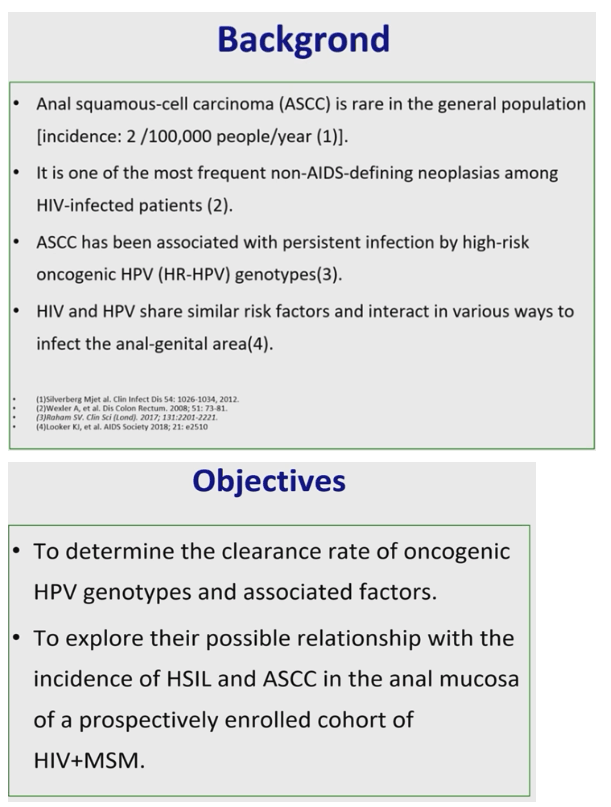
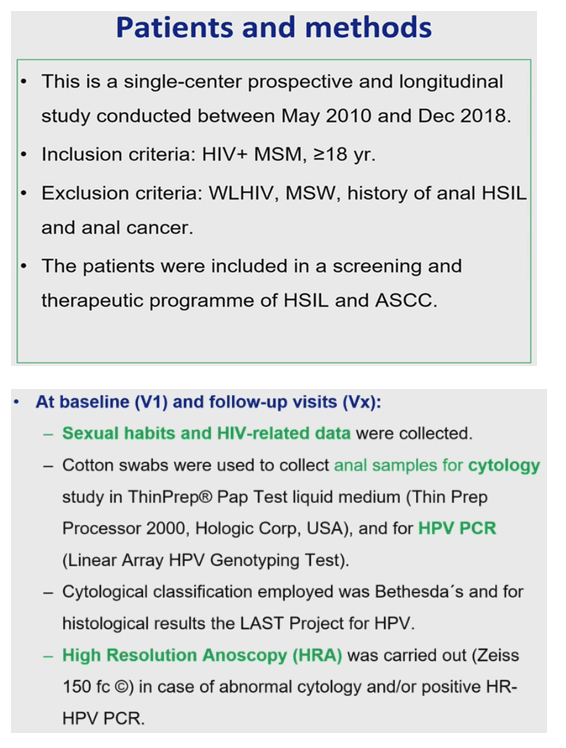
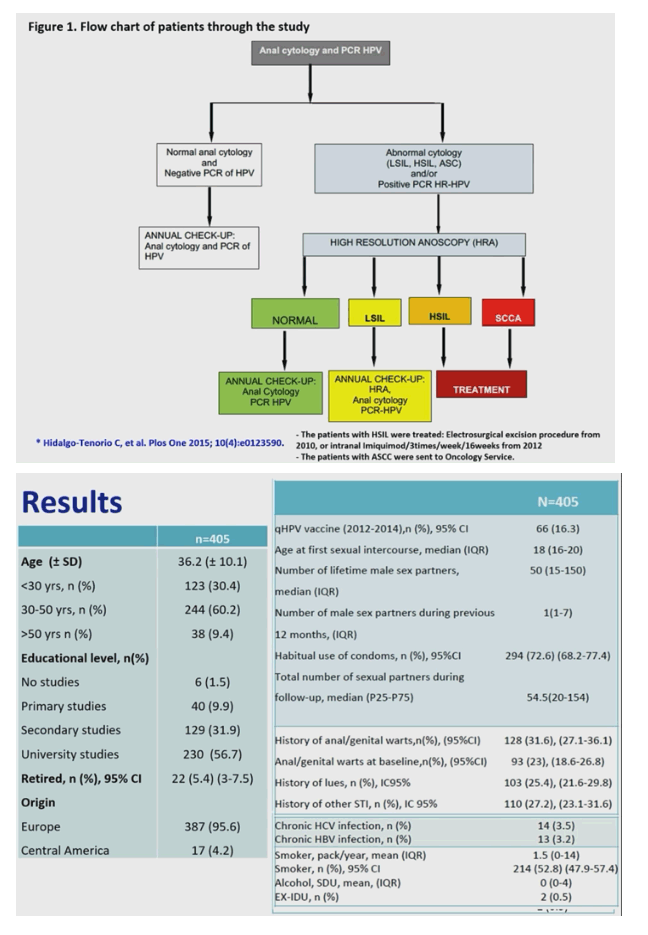
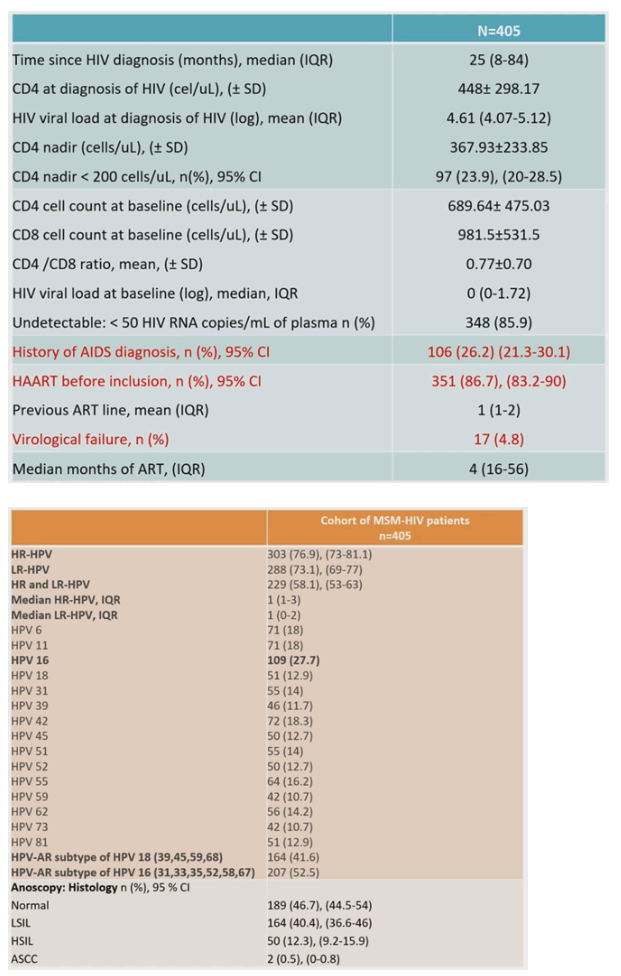
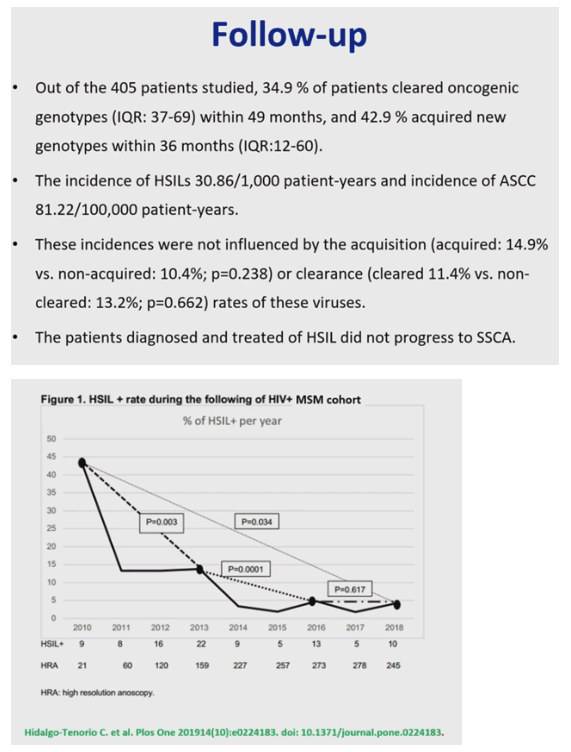
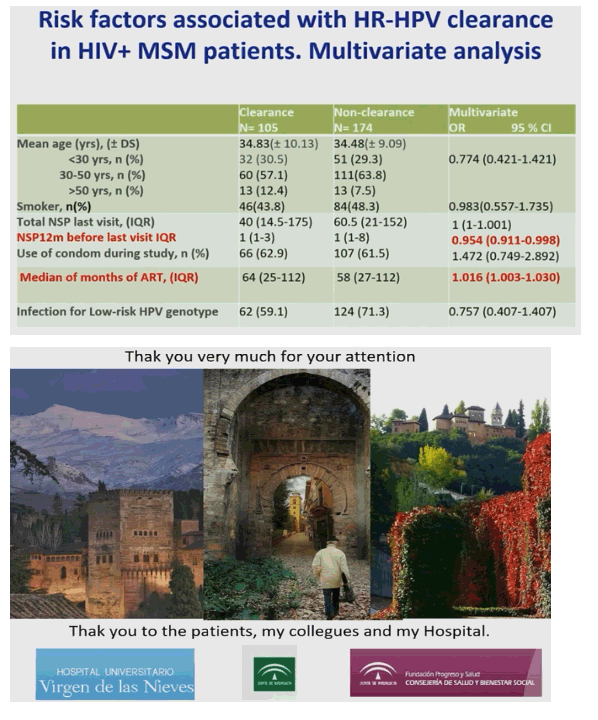
|
| |
|
 |
 |
|
|